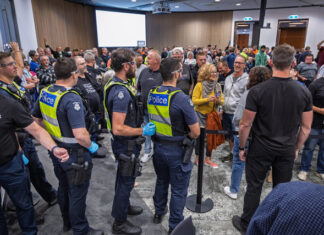By Danny Buttler
Hobby farms are little pieces of paradise in the country … or a waste of good agricultural land.
There’s no doubt that the proliferation of small land holdings has been a divisive issue for country folks in recent years.
Stories of city slickers with more money than sense have kept professional farmers amused and bemused as they watch the newcomers struggle to turn their tree change dream into a reality. Jokes about their hobby of growing blackberries and rabbits were sometimes not too far from the mark.
But there’s another side to the growth in hobby farms that has never been calculated before. Just how much do these small holding owners contribute to regional economies?
Agribusiness Gippsland, in conjunction with the Mornington Peninsula Shire is seeking to separate myth from reality with a landmark study of the economic impact of small holdings.
Agribusiness Gippsland executive officer Sue Webster said the idea for the study came from a local farmer during the last downturn in the farming sector.
“It’s the brainchild of Marie Trigg from Kernot who had been musing that during the drought it was the lifestylers who were keeping the farm supply business people going,” Ms Webster said.
When Melbourne University offered the services of volunteer post-graduate business students to crunch some numbers for them, Agribusiness Gippsland jumped at the chance to compile solid data and, hopefully, come to some important conclusions.
“We didn’t realise at the time what a hot button issue it really is,” Ms Webster said.
“As soon as we publicised what were doing we had emails and phone calls from the South Australian Department of Primary Industries, Charles Sturt University and other Victorian municipalities wanting a copy of the report as soon as it was completed.”
The online survey has elicited 218 responses. The raw data, along with information gleaned from interviews with farm suppliers, is currently being evaluated by the post-grad students – all from China – who will use the latest statistical methods to draw conclusions.
“They will put a really strong business case analysis over the subject, which will be weighing up the comparative economic befits to the local economy,” Ms Webster said.
“They will compare rate inputs versus the amount of services required from council and where the local farm suppliers are getting the bulk of their business from.”
The students, Tracy Zhou, Serena Xu, Wan Zou and Tao Chan, have found the exercise more complex than expected purely because of the difficulty in defining what a hobby farm is.
Ms Zou said income and land size were both problematic when it came to separating the amateurs from the pros.
“The data from the tax office suggests that income below $22,000 a year can be defined as hobby farming, but from other criteria it might be $45,000, so we couldn’t find a standard that we could define as hobby farming.”
One man who can see things from both sides of the farm fence is Bunyip land owner John Anderson, who was hosting the students during their time in Gippsland.
John, who with wife Sue started out as a hobby farmer and now owns a dairy share farm, said the worth of smaller acreages may have been underestimated.
He believes that the dollar power of hobby farmers adds greatly to country communities. He also reckons it is a myth that small landholders grow nothing but weeds.
“A lot of the beef that comes out of Gippsland is from hobby farms and I don’t think a lot of people realise that,” he said.
“They are certainly good for the local economy with people buying the same fencing equipment, cattle medicines or other necessities that you buy on a bigger farm, but on a smaller scale.”
Conclusions from the survey data are expected to be released in late March.
Get the latest news to your email inbox FREE!
REGISTER




